Moments in time: The World Road Race Championship
The greatest highlights in the race for gold
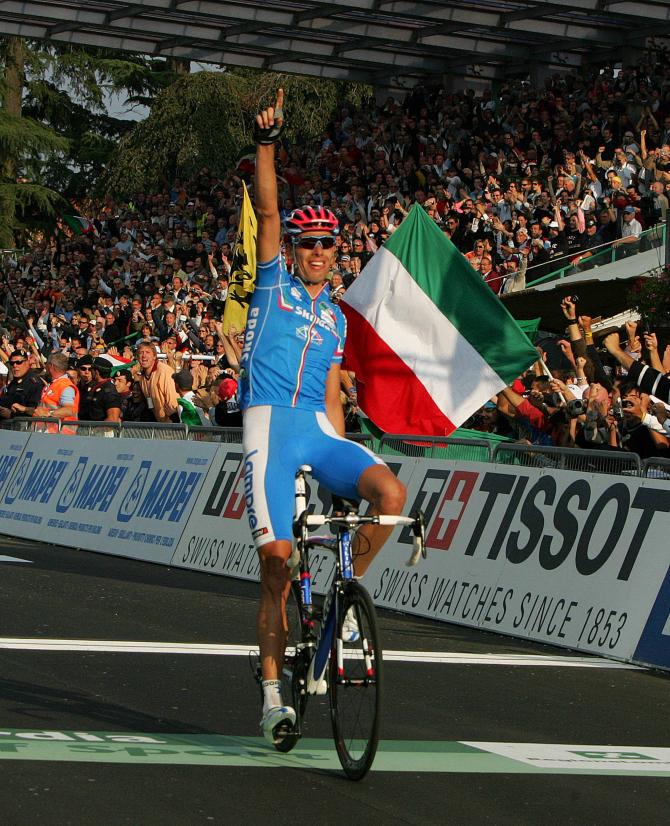
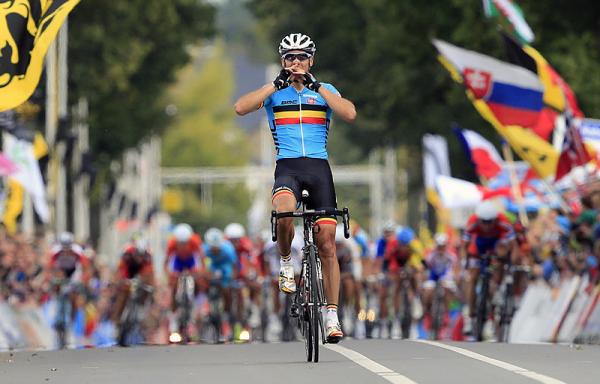
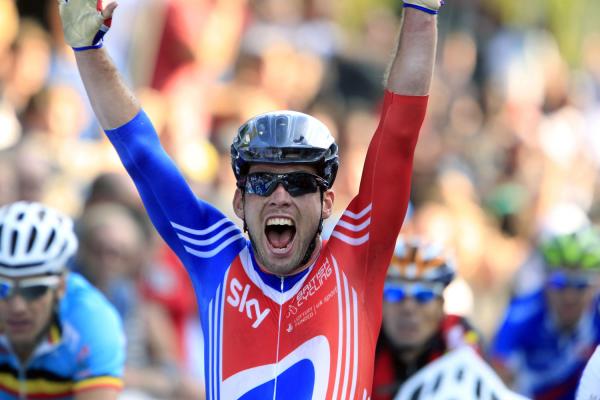
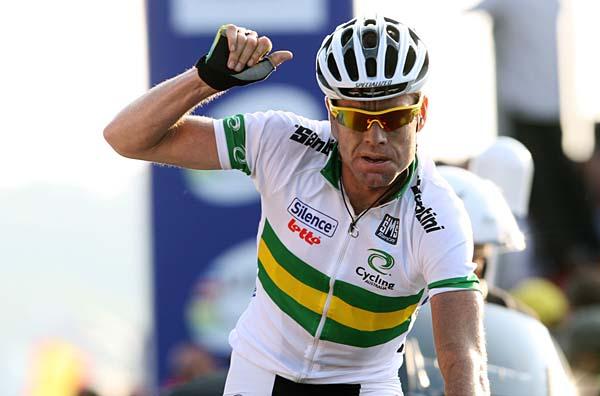
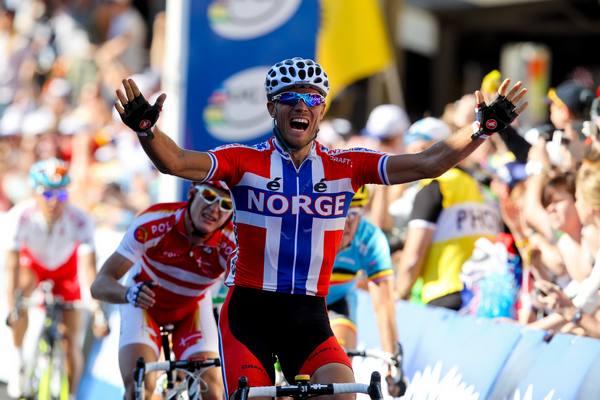
1927: Trigger for a bitter rivalry
Scheduling the first World Road Race Championship just four days after the final day of that year's Tour de France, won by Luxembourg's Nicolas Frantz, wasn't a great piece of planning as it meant that none of the Tour's big names made the trip to Germany's Nürburgring. France's six man team, for example, featured just two professionals and four amateur riders.
However, the Italians were there in force and ended up filling the top four places as Alfredo Binda took the title ahead of the first "Campionissimo", Costante Girardengo, with Domenico Piemontesi third and Gaetano Belloni fourth. The Italians had agreed to split the prize money between them, but, according to Girardengo, Binda went back on his word. The resulting feud lasted for more than two years, as Italy's two biggest stars refused to exchange a single word with each other.
1934: The youngest world champion
Lance Armstrong is often described as the youngest winner of the world title, but the American was actually a week older than 1970 champion Jean-Pierre Monséré and the best part of two years older than 1934 winner Karel Kaers. A Belgian junior track champion, Kaers turned pro in 1933 when still two months short of his 19th birthday. Blessed with an impressively swift finishing kick, Kaers quickly pocketed a number of prestigious criterium wins, which earned him a place in the Belgian team for the 1934 Worlds in Leipzig.
The 9.4km course was pan-flat, which suited Kaers perfectly, as his 85kg meant he rarely featured in hilly races. Learco "The Human Locomotive" Guerra was the favourite, and it was the Italian who pushed Kaers for the title, or at least he did until the Belgian eased Guerra towards the barriers, shutting off his route to the line. Guerra protested the result, but Kaers kept the crown.
1946: The longest-standing champion loses his crown
Get The Leadout Newsletter
The latest race content, interviews, features, reviews and expert buying guides, direct to your inbox!
As a result of the outbreak of the Second World War, Marcel Kint's victory at the 1938 Worlds in Valkenburg meant "The Black Eagle" kept the title for eight years until the 1946 championship in Zurich. As well as Kint, the four-man Belgian team featured Briek Schotte, Émile Masson and the super-quick Rik Van Steenbergen. On the final lap, Kint and Van Steenbergen were clear with Switzerland's Hans Knecht.
Figuring they both had the beating of the Swiss in a sprint, they agreed to split the prize money for first place between them. Soon after, however, Van Steenbergen ran out of juice and fell back out of contention. Kint still had both the speed and experience to beat Knecht, but his chance of retaining the title went when some Swiss fans encroached into the final straight, blocking his path and allowing the Swiss rider an easy win.
1952: The most surprising podium finishers
Having missed out in 1946, Rik Van Steenbergen took the world title two years later. Four years on from that, the great Belgian Classics star began the 1952 race in Luxembourg as favourite. The 280km course in the Grand Duchy suited sprinters, but if anything it was too easy as 34 of the 48 starters charged into the finish. Everyone was looking for Van Steenbergen to deliver a winning burst, but it came instead from little-known German Heinz Müller, who edged out Switzerland's Gottfriend Weilenmann, with another German, track specialist Ludwig Hörmann, in third and Van Steenbergen only ninth.
Of the three riders on the podium, Swiss champion Weilenmann was the best known, thanks to five Tour de France finishes. Although Müller did continue to win regularly in Germany, he never featured among the challengers for the world crown or any other major title following his rainbow jersey success.
1959: After two third places, victory for Darrigade
The most successful sprinter in the history of the Tour de France until the advent of Mark Cavendish, Frenchman André Darrigade almost missed the 1959 championship on the motor-racing circuit among the dunes at Zandvoort, Netherlands, after crashing heavily the week before. However, buoyed by his good form and third place finishes in the two previous editions of the Worlds, he insisted on starting. Fearful of the finishing speed of Belgium's two Riks, Van Steenbergen and Van Looy, Darrigade joined an early break, thinking that if it didn't stay clear he would have at least shown himself.
Thanks to the work done by fellow breakaway Tom Simpson and the efforts made by French team-mate Jacques Anquetil to hamper the peloton's pursuit of the leaders, Darrigade stayed clear. In the finish he easily disposed of Italy's Michele Gismondi and Belgium's Noël Foré, with Simpson fourth.
1962: Training partners vie for the title
On a hot day in Salo di Garda, team-mates and training partners Shay Elliott and Jean Stablinski found themselves in a lead group of four riders going into the penultimate lap. Ireland's Elliott had been training hard for the championships. In the few days beforehand, Stablinski had joined him, the pair of them taking turns at being paced behind a motorbike. That preparation was about to pay off for one of them, apparently Elliott as he launched an attack that initially no one followed. After a while though, Belgium's Jos Hoevenaers and Germany's Rolf Wolfshohl took up the chase and steadily reeled the Irishman in.
Yet, when Stablinski attacked as soon as the group had come back together, no one responded and the Frenchman continued on alone to take the title. Up to his death in 1971, Elliott remained convinced "Stab" had paid off the other two riders in the group knowing the Irishman was the strongest.
1972: "Crazy Heart's" worst moment
Like Queen Elizabeth's racehorse Devon Loch in the 1956 Grand National, Franco Bitossi had the race won and then lost it in the final straight with the line just metres away. Known as "Crazy Heart" due to the way his heart would race in moments of stress, forcing him to stop and wait till it eased before continuing, Bitossi had attacked in the final few kilometres of the race in Gap. With a kilometre to the line, his advantage was 250 metres, more than enough to savour his greatest triumph.
Suddenly, though, doubt began to creep into the Italian's mind. Had he attacked too early? Had he spent too long out in the wind? Was he using the right gear? With 100 metres left, he couldn't turn the pedals. The group behind closed in and the fastest rider in it flashed past. Fortunately for Italy, it was Bitossi's team-mate Marino Basso, as "Crazy Heart" rolled over the line to finish second.
1979: Raas profits from Ti-Raleigh's power
Having won the Amstel Gold Race a record five times, it was no surprise that Jan Raas took the world title in front of the massed ranks of Dutch fans at Valkenburg. His victory was not without controversy, however. He was able to count on strong backing from several members of his Ti-Raleigh team, including Germany's Didi Thurau, whose attack 25km from home produced the winning group. As well as Raas, that group also featured Giovanni Battaglin, winner of all three pre-Worlds races in Italy and in the form of his life.
After Thurau had chased down a very late dig by France's André Chalmel with 400m remaining, the lead group switched from left to right to get out of the wind. Raas' pedal caught Battaglin's wheel and the Italian went down. Raas surged on to win. The Italians protested, pointing out Raas had also leaned on the Dutch team car climbing the Cauberg. It was to no avail. Raas kept the rainbow jersey.
1984: The day "Criq" did cross the line first
Any mention of the names Claude Criquielion and Steve Bauer is almost certain to bring to mind their tussle in the finishing straight at Ronse in the 1988 Worlds that left the Belgian on the Tarmac and the Canadian facing a demand for $1.5m in damages from his stricken rival. Less well remembered, though, is the Barcelona Worlds of 1984, when the same two riders finished on the podium, Criquielion taking the title as Bauer finished third behind Claudio Corti.
The Italian had been riding for Moreno Argentin, but got his chance when his team leader said he was tiring. Corti attacked and went clear, believing he was leading the race, only to be told on the last lap that Criquielion was still ahead. Corti cut the Belgian's advantage to 14 seconds, but it was to be Criq's day.
1994: France v Italy contest goes Leblanc's way
Heat dominated the championships in Sicily. During the inaugural world time trial event in Catania, Britain's Graeme Obree had vomited on the bike due to the effects of heatstroke as compatriot Chris Boardman took the title. The temperatures had not eased when the peloton gathered in Agrigento a few days later for the road race. The contest was dominated by the French and Italian teams. The azzurri made the race as tough as possible, whittling down the main group through persistent attacks. France responded in kind, with Jacky Durand, Stéphane Heulot and Laurent Madouas all prominent.
The result of this aggression was a final-lap head-to-head between Italy's Massimo Ghirotto and France's Luc Leblanc. The Italian was the better sprinter, but couldn't respond to Leblanc's surge on the final climb, and it was the Frenchman who rode in alone to take the title, Italy's consolation coming with Claudio Chiappucci's silver ahead of Richard Virenque.
2001: Freire benefits from Italian in-fighting
The Lisbon course appeared tough enough to split the race, but heading onto the final climb, just 5km from the line, the lead group was still large. Knowing the climb offered his one chance, Italy's Gilberto Simoni attacked and went clear, quickly gaining what appeared to be a winning lead given the fast run down into the finish. The response came not, as was expected, from the Spanish team, but from Simoni's own team-mate, Paolo Lanfranchi, whose pace-making quickly nullified Simoni's advantage.
Lanfranchi later claimed he didn't realise Simoni had gone clear, while Simoni retorted that Lanfranchi had been working for his Mapei trade team leader Paolo Bettini. Perhaps not coincidentally, title winner Oscar Freire rode for Mapei as well.
2008: Italy's last Worlds success
The last time the Worlds took place in Italy was also the last time the azzurri claimed the title. The Italians had one plan and that was to set up Paolo Bettini for an unprecedented third world title in succession. However, rival teams marked Bettini so closely that the Italians had to switch to other options. On the final lap, three of their riders got into the small leading group. Over the closing 5km, Davide Rebellin and Damiano Cunego tried to get clear as the road climbed, while Alessandro Ballan sat in.
When Rebellin's final effort was countered 3km from home, Ballan attacked hard on a false flat, jetting clear of the group as the cheers of home fans resounded through Varese's streets. With his two team-mates marking all attempts to chase, Ballan had plenty of time to celebrate what he confessed was the greatest day of his career.
Peter Cossins has written about professional cycling since 1993 and is a contributing editor to Procycling. He is the author of The Monuments: The Grit and the Glory of Cycling's Greatest One-Day Races (Bloomsbury, March 2014) and has translated Christophe Bassons' autobiography, A Clean Break (Bloomsbury, July 2014).